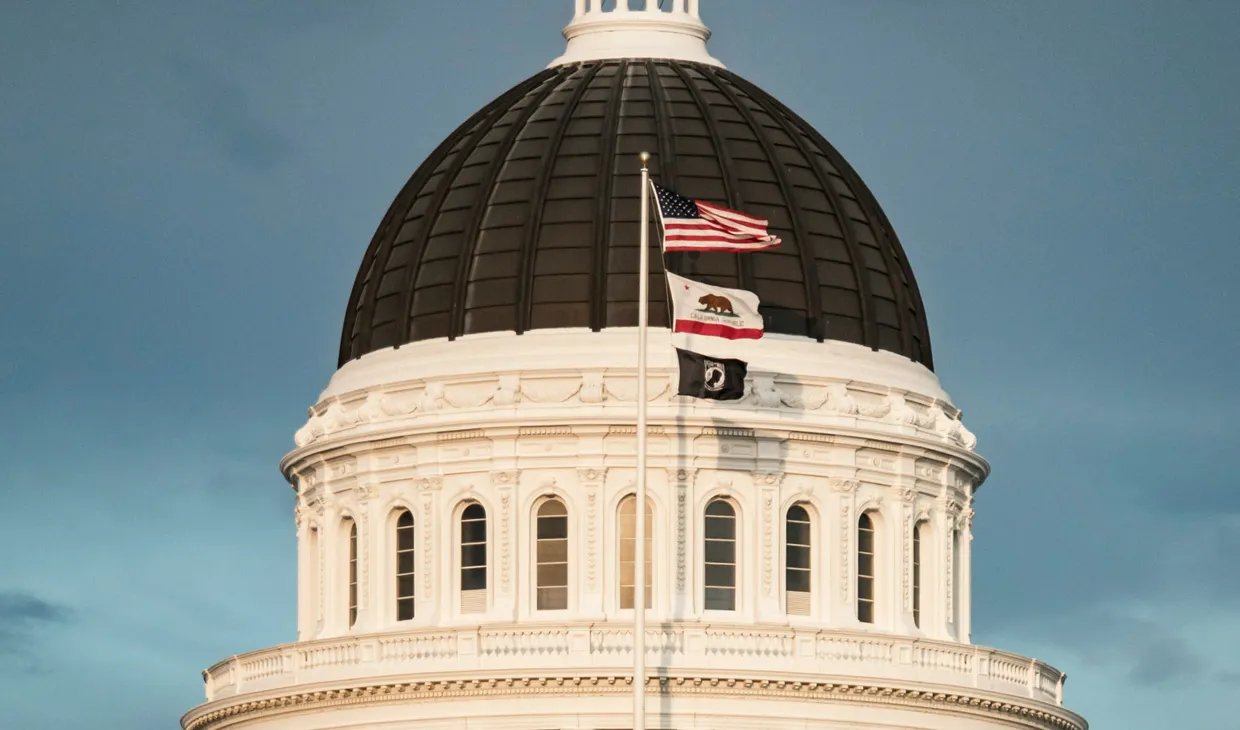How can in-scope companies comply with the SB 253?
Compliance with SB 253 is not a one-time task—it requires a multi-phase strategy and a deep integration of climate-related tracking systems into daily operations. Here’s how in-scope companies can prepare:
1. Understand your reporting boundaries
You’ll need to assess all entities within your business group to determine which emissions sources must be included. This includes:
- Owned and operated facilities (Scope 1, direct greenhouse gas emissions)
- Purchased energy (Scope 2)
- Suppliers, distributors, product use, waste, downstream greenhouse gas emissions, and other value chain emissions (Scope 3)
For multinational organisations, emissions from global operations tied to California business activity may need to be included.
2. Build internal data infrastructure
If you’re not already tracking emissions, now is the time to start. You’ll need systems that:
- Accurately collect activity data (e.g., fuel use, electricity consumption, supplier data)
- Convert data into emissions using emissions factors
- Distinguish between direct and indirect emissions
With the transition from voluntary reporting to mandatory reporting under SB 253, it is crucial to build robust internal data infrastructure to ensure compliance and transparency with an emissions reporting organization pursuant to state-approved frameworks for climate accountability.
Excel spreadsheets are rarely sufficient for this level of complexity. Consider implementing a sustainability data management platform that can integrate with existing systems such as ERP or supply chain software.
3. Manage Scope 3 greenhouse gas emissions
This is often the most time-consuming and complex step. Scope 3 emissions include upstream and downstream activities such as raw material extraction, business travel, product transportation, and end-of-life disposal. Since much of this data lies with third parties, businesses must:
- Engage suppliers directly or through surveys
- Use spend-based or activity-based models
- Estimate emissions where primary data is unavailable, utilizing industry average data as an acceptable source
Good-faith efforts will be protected under the “safe harbour” clause until 2030, but companies must show that they are taking reasonable steps to improve data quality. Additionally, it is crucial to address the needs of all relevant parties, including those representing environmental justice interests, to ensure comprehensive participation in the emissions reporting process.
4. Secure third-party assurance
Independent assurance is required to verify the accuracy and completeness of your emissions disclosures. Starting in 2026, Scope 1 and 2 emissions must undergo limited assurance. From 2030, this escalates to reasonable assurance for Scope 1 and 2, and limited assurance for Scope 3.
Due to a shortage of qualified verifiers, it’s essential to begin the selection process early. Build relationships with reputable assurance providers now to avoid bottlenecks later. Ensuring the assurance process minimizes the need for reporting entities to engage multiple assurance providers will enhance efficiency and capacity in compliance reporting.
5. Disclose publicly
Reports must be made publicly available, meaning your disclosures will be scrutinised by investors, regulators, customers, and the media. Ensure your disclosures are clear, transparent, and aligned with best practices. Consider preparing a communication strategy to support your climate disclosures. Additionally, under the California Global Warming Solutions Act, businesses may need to contribute to the emissions disclosure fund, which supports compliance activities and the state’s climate accountability efforts.
How can ESG software support the compliance process?
ESG software platforms can transform how businesses approach SB 253 compliance. These platforms can assist in creating a comprehensive greenhouse gas emissions inventory, detailing scope 1, scope 2, and scope 3 emissions, to meet regulatory requirements for public disclosure and assurance engagements. Additionally, ESG software supports greenhouse gas emissions reduction by enabling businesses to monitor, publicly disclose, and reduce their emissions in alignment with state climate goals. Obtaining a complete assurance provider’s report is essential for validating the accuracy of these disclosures and ensuring compliance. Here’s how the right platform can help:
Centralise data collection
Collect emissions data from facilities, utility bills, suppliers, transport records, and more—all in one place. Automation tools can standardise data and reduce errors.
A reporting program, developed under the California Global Warming Solutions Act, centralizes emissions data collection to ensure transparency and accountability among reporting entities. This program often involves a nonprofit emissions reporting organization contracted by the state board to oversee greenhouse gas emissions reporting, ensuring compliance and accuracy in emissions disclosures.
Calculate emissions accurately
Most ESG tools are pre-programmed with the Greenhouse Gas Protocol and emissions factor libraries, adhering to greenhouse gas protocol standards set by the World Business Council for Sustainable Development, which reduces the risk of calculation mistakes. AI-powered platforms can enhance accuracy by flagging anomalies or estimating gaps in supplier data.
Manage Scope 3 engagement
Leading platforms allow you to build supplier engagement workflows, collect questionnaires, and monitor data quality. They may also provide industry benchmarks for estimating emissions where data is missing. Additionally, it is crucial to consult with stakeholders representing consumer interests and incorporate industry stakeholder input to ensure that the Scope 3 engagement process is comprehensive and addresses the needs of all relevant parties.
Enable assurance and audits
ESG software can generate audit-ready reports, store documentation for traceability, and facilitate collaboration with third-party verifiers. This reduces the administrative burden of external audits. Additionally, obtaining a complete assurance provider’s report is crucial for compliance, as it assesses the accuracy of the emissions data being disclosed and ensures transparency and accountability in emissions reporting.
Track progress and align with other frameworks
Many businesses will be reporting under multiple regulations (CSRD, TCFD, ISSB, etc.). ESG platforms often include features that allow businesses to map one set of data to multiple reporting frameworks, reducing duplication. Additionally, these platforms support global greenhouse gas accounting, ensuring compliance with legislative requirements and promoting transparency in emissions reporting.
Other FAQs
Which companies are covered by SB 253?
SB 253 applies to US-based public or private corporations, limited liability companies (LLCs), and partnerships that:
- Do business in California
- Have total annual revenue of $1 billion or more (based on global revenue)
This means even businesses headquartered outside California—or outside the US—may be subject if they meet the revenue threshold and conduct sufficient business in the state.
What does “doing business” in California mean?
California’s tax code defines this broadly. A company is considered to be “doing business” in the state if it:
- Has sales in California exceeding either $690,144 or 25% of total sales (2022 threshold)
- Owns real property or pays compensation above set limits in California
- Has an employee or representative operating in California
This includes partnerships, corporations, and other business entities with substantial annual revenues, which must disclose their greenhouse gas emissions and adhere to regulatory compliance under the California Global Warming Solutions Act, including mandatory industrial emissions reporting requirements.
So, even businesses without a physical office in California might still fall within the scope of SB 253.
Do smaller companies need to comply with SB 253?
Not directly. The law only applies to companies with at least $1 billion in global revenue. However, smaller businesses in the value chain of larger companies may be indirectly affected, especially in providing Scope 3 data related to corporate carbon emissions. This will create increased pressure on SMEs to monitor their emissions and share data with their larger partners, aligning with corporate carbon emissions accounting standards.
What is the timeline for implementation?
SB 253 follows a phased implementation schedule:
- 2026: Scope 1 and 2 disclosures begin (based on 2025 data), with limited assurance
- 2027: Scope 3 disclosures begin (based on 2026 data), protected under a safe harbour provision
- 2030: Scope 1 and 2 disclosures require reasonable assurance; Scope 3 disclosures require limited assurance
This phased schedule ensures timely reporting implementation, allowing entities to adhere to deadlines for disclosing their greenhouse gas emissions in accordance with the regulations adopted pursuant to the state board’s requirements.
During the safe harbour period (2027–2030), companies will not be penalised for good-faith misstatements of Scope 3 data.
How does SB 253 differ from SB 261?
SB 253 and SB 261 are companion laws introduced in California, but they cover different aspects of climate disclosure.
SB 253 – Climate Corporate Data Accountability Act:
- Applies to businesses with over $1 billion in annual revenue
- Requires annual reporting of GHG emissions (Scopes 1, 2, and 3)
- Mandates third-party assurance (limited or reasonable depending on scope and year)
- Uses the Greenhouse Gas Protocol as the reporting standard
- Reports prepared on emissions disclosures will be submitted to relevant policy committees, emphasizing legislative oversight and the importance of reporting entities disclosures for transparency and accessibility.
SB 261 – Climate-Related Financial Risk Act:
- Applies to businesses with over $500 million in annual revenue
- Requires biennial reports outlining climate-related financial risks
- Does not require third-party verification, but companies must align with global frameworks such as the TCFD
- Focuses on financial implications of climate risks rather than emissions tracking
Together, these laws represent a dual framework. While SB 253 quantifies a business’s carbon footprint, SB 261 examines how climate change might impact the company’s finances and strategy. Many companies will need to comply with both, requiring a holistic and well-integrated ESG strategy.
What this means for your business
SB 253 is not just another reporting burden—it’s a signal of where the future is headed. Emissions transparency, including comprehensive greenhouse gas emissions reporting that must be publicly disclosed, is becoming a licence to operate, and businesses that prepare early will gain a competitive edge.
To meet the requirements:
- Start mapping emissions sources now, especially Scope 3
- Invest in data systems and ESG platforms
- Engage your suppliers proactively
- Budget for assurance and external support
- Align reporting across multiple jurisdictions
By starting early and building a robust strategy, your business can not only comply with SB 253 but also demonstrate leadership in the net zero carbon economy.
Need help getting started? ESG software can guide you through the entire process—from data capture to assurance-ready reports. Now is the time to prepare for a lower-carbon future.




